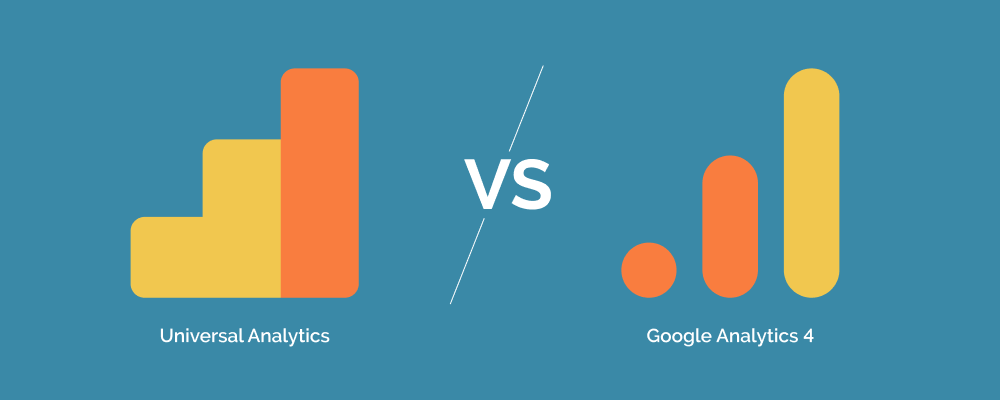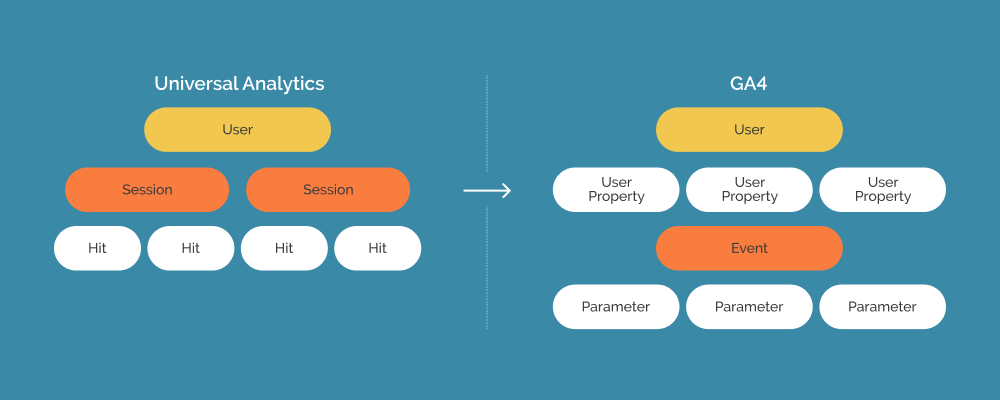Technology, zBlog
Everything You Need to Know Google Analytics 4: A Complete Guide
trantorindia | Updated: June 7, 2022

Google Analytics 4 (GA4), the most recent generation of the Google Analytics platform, was released in the autumn of 2020. GA4 is the new default for digital analytics measurement in GA, replacing Universal Analytics (UA). And now, in 2022, Google has indicated that starting July 1, 2023, GA4 will be the sole option.
As we know Universal Analytics is being phased out in July 2023, now is the time to implement GA4 and be ahead of the curve with your data and decisions. Google Analytics 4 is the next big thing.
What is Google Analytics 4?
The latest version of the Google Analytics tracking technology is Google Analytics 4 (aka GA4). It’s called GA4 since it’s the fourth version of the tracking tool. GA1 was the initial, or classic Google Analytics platform; GA2 was also known as universal and utilized the analytics.js library; GA3 was also labeled universal (but used the gtag.js library), and GA4 will use the gtag.js library but will offer a new measurement methodology known as firebase analytics.
GA4 was previously known as the “Apps and Web” attribute, which you may have spotted in your Google Analytics accounts. GA4 makes it feasible to combine insights from a website/app into a single location (or Property), which was previously inaccessible.
What’s the difference between GA4 and Universal Analytics?

Universal Analytics and GA4 have a few significant differences. Google Analytics 4 uses the User ID approach to establish user count, which includes active users who are presently engaged with the site. Universal Analytics, on the other hand, uses the Client ID method and focuses on the overall number of visitors to the site.
GA4 enables more reliable information across platforms for any unique users – great for those who have a website and a mobile app and previously had to switch between different Properties/Views to review data.
The solution also has more comprehensive cross-device and cross-platform tracking, which eliminates the need for the earlier roll-up property you may have been using.
GA4 contains more complex analysis reports as well as a free BigQuery connection, allowing access to services that were previously only available to premium members or GA 360 clients. This gives you access to raw data and the ability to conduct SQL queries on it, allowing you to gain significantly more advanced data insights.
There are also no more restrictions on volume data, which were formerly reserved for the GA 360 product. Some activity types, including those supported by Google Tag Manager, have automatic event tracking built-in (page scroll depth, outbound link clicks, and so on).
Things to Consider
- Validity – The urge is palpable since if the deployment isn’t completed as soon as feasible, you won’t have a baseline against which to evaluate data in July 2023.
- Towards A Cookieless Future – GA4 will provide users with more data controls to help them better govern how they gather, keep, and use analytical data. It will serve as the foundation for upcoming measurements without the use of cookies.
- Tag Management – In its latest edition, Google Tag Manager is still the most effective approach to deploying Google Analytics. We have a lot of experience with Google Tag Manager.
- Event-based system – The new metric is based on occurrences, and it categorizes them without limitations, which necessitates a prior definition. This is critical since it will serve as the foundation for measurement in the following years.
Benefits of Google Analytics 4:

- With G4 you can now track your progress on the web and in your app
- Purchase probability, churn probability, and revenue projection are three indicators that GA4 measures to help you forecast users’ future activities
- GA4 adds new, more robust measures, as well as more sophisticated analyst tools and integrations, resulting in larger audiences for marketing campaigns and a higher return on ad spend
- GA4 is a lot easier to use than Universal Analytics, and it’s designed to save you time and effort
- Session metrics, which are readily fragmented by device or platform, are no longer the emphasis. The focus has shifted to users and their interactions, which are now only recorded as events.
GA4 Migration Service

GA4 is the most recent version of Google Analytics, which is used to gather better insights into their website and digital marketing channel performance. Most websites currently utilize Universal Analytics tracking, however, this version will soon be deprecated, mandating a migration to GA4.
This is where our GA4 migration solution comes in, allowing you to future-proof your analytics setup and take advantage of the amazing new functionalities coming GA4 users exclusively.
From the development of KPIs, classification of events, and dataLayer needs through implementation with Google Tag Manager, Trantor handles the migration to Google Analytics 4.
This new and better GA4 provides useful analytical techniques through inbuilt reports. Also, a free hand to analyze the data specific to your business needs and you get the flexibility to create custom reports. These reports can be leveraged to have powerful insights and decision-making capabilities. Just make sure that you have an accurate implementation of important events in place.
While GA4 is still in its infancy and is still being developed, our top advice is to begin learning how to utilize it successfully today to stay ahead of the competition and save time in the future.



